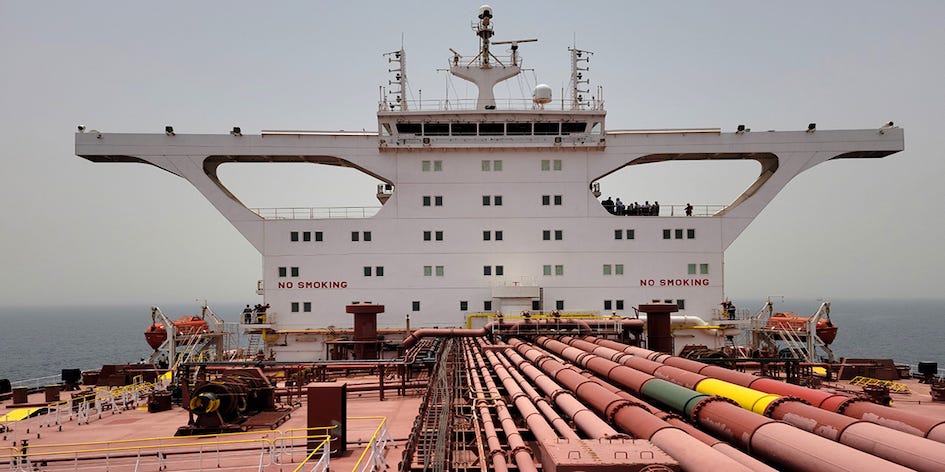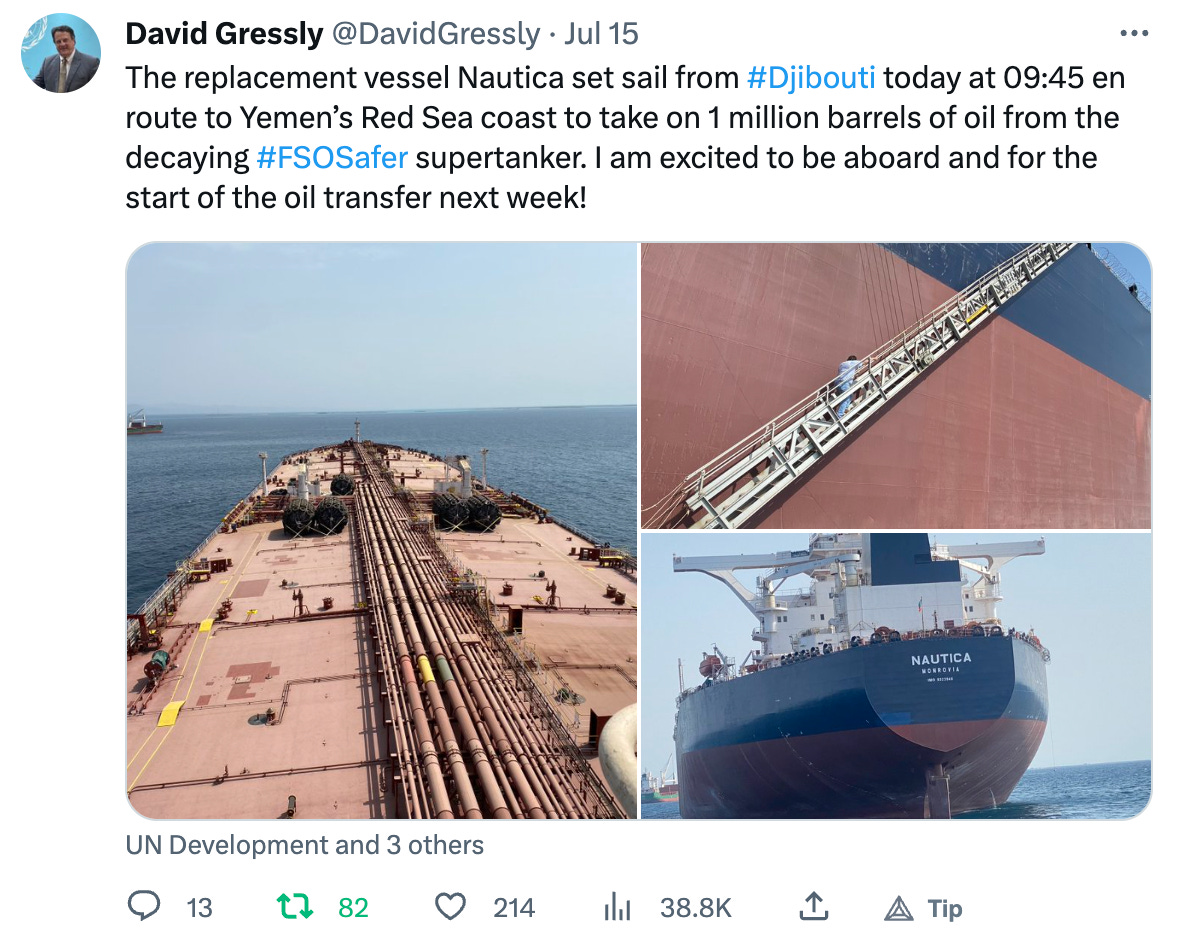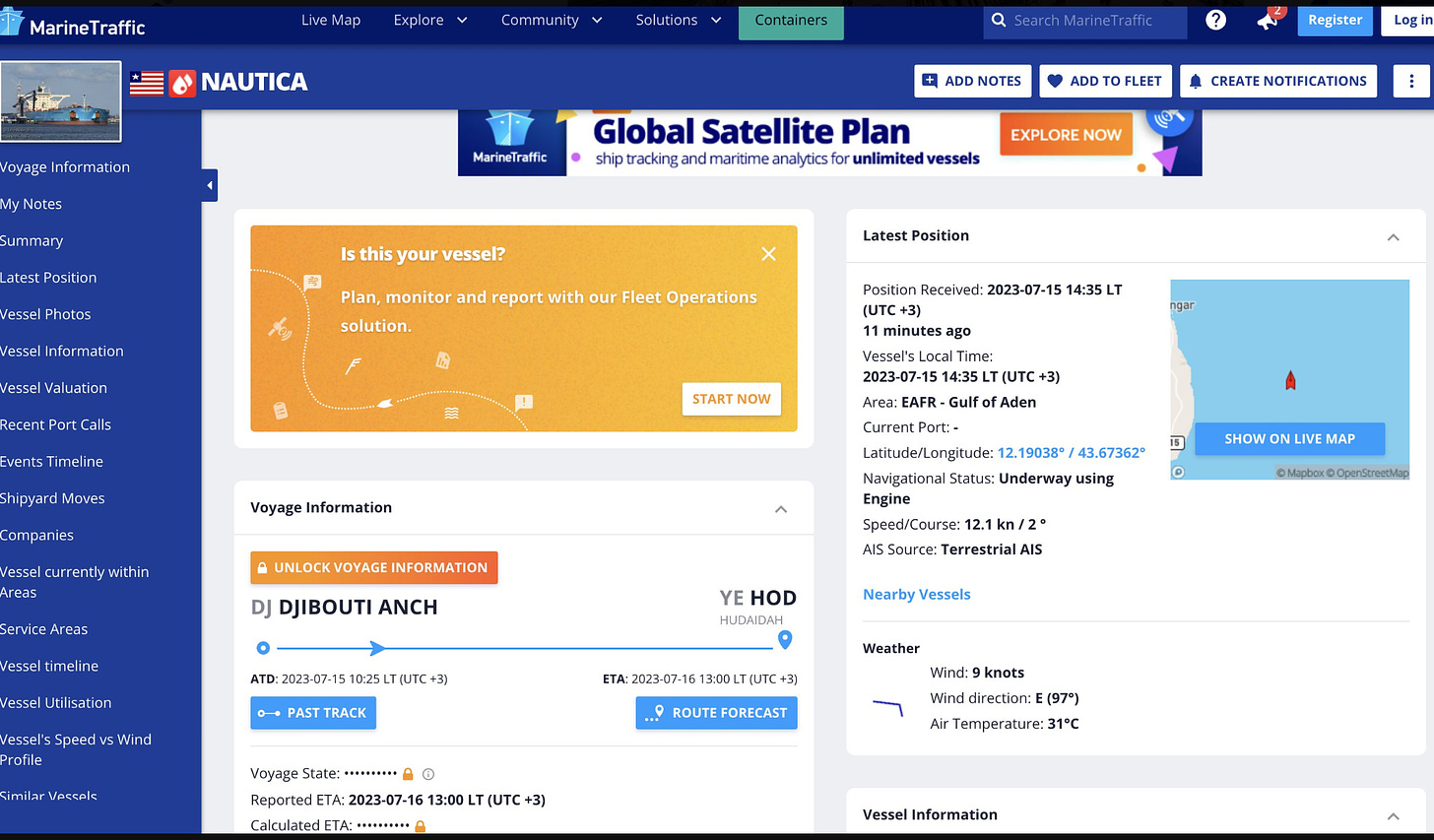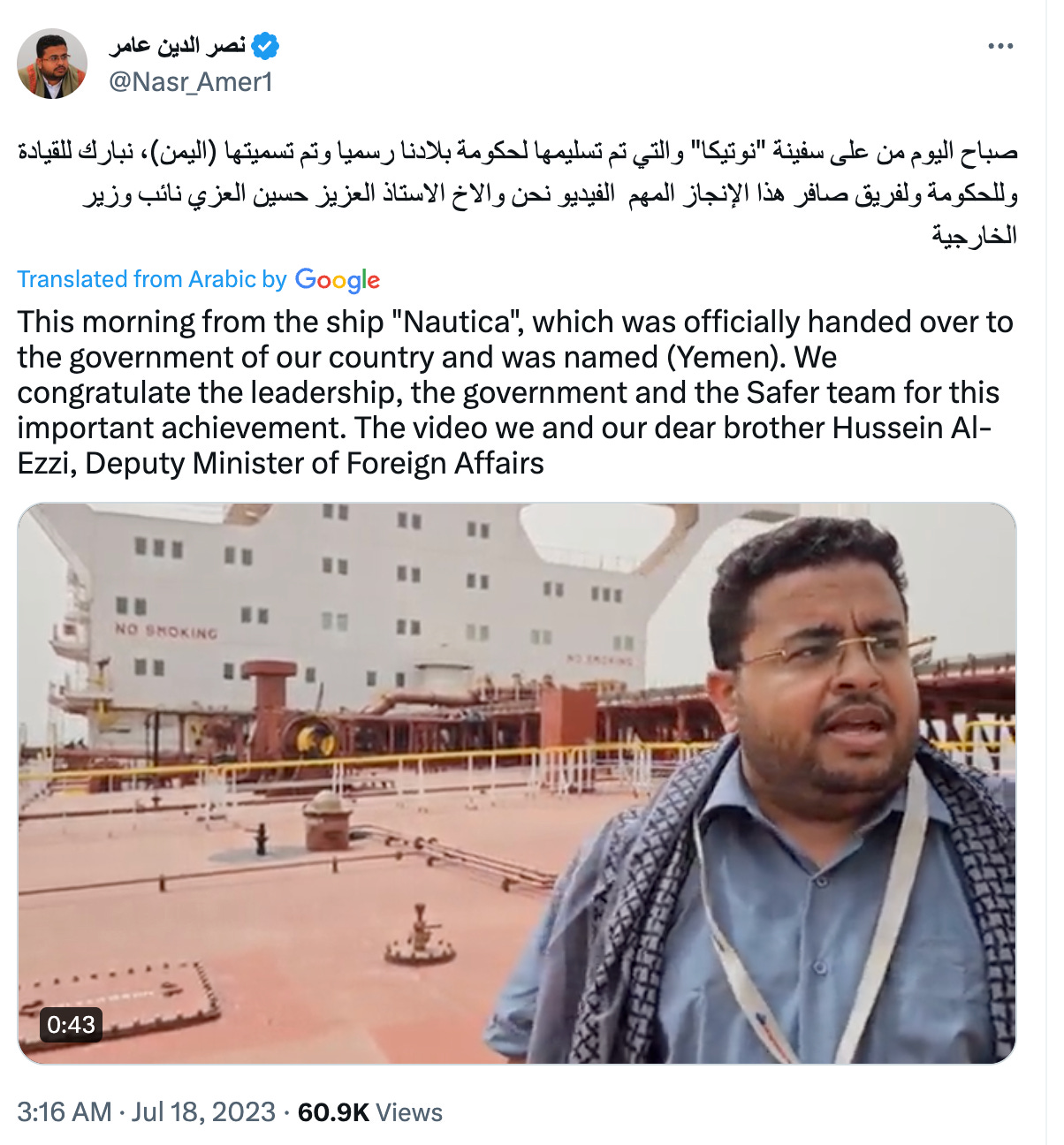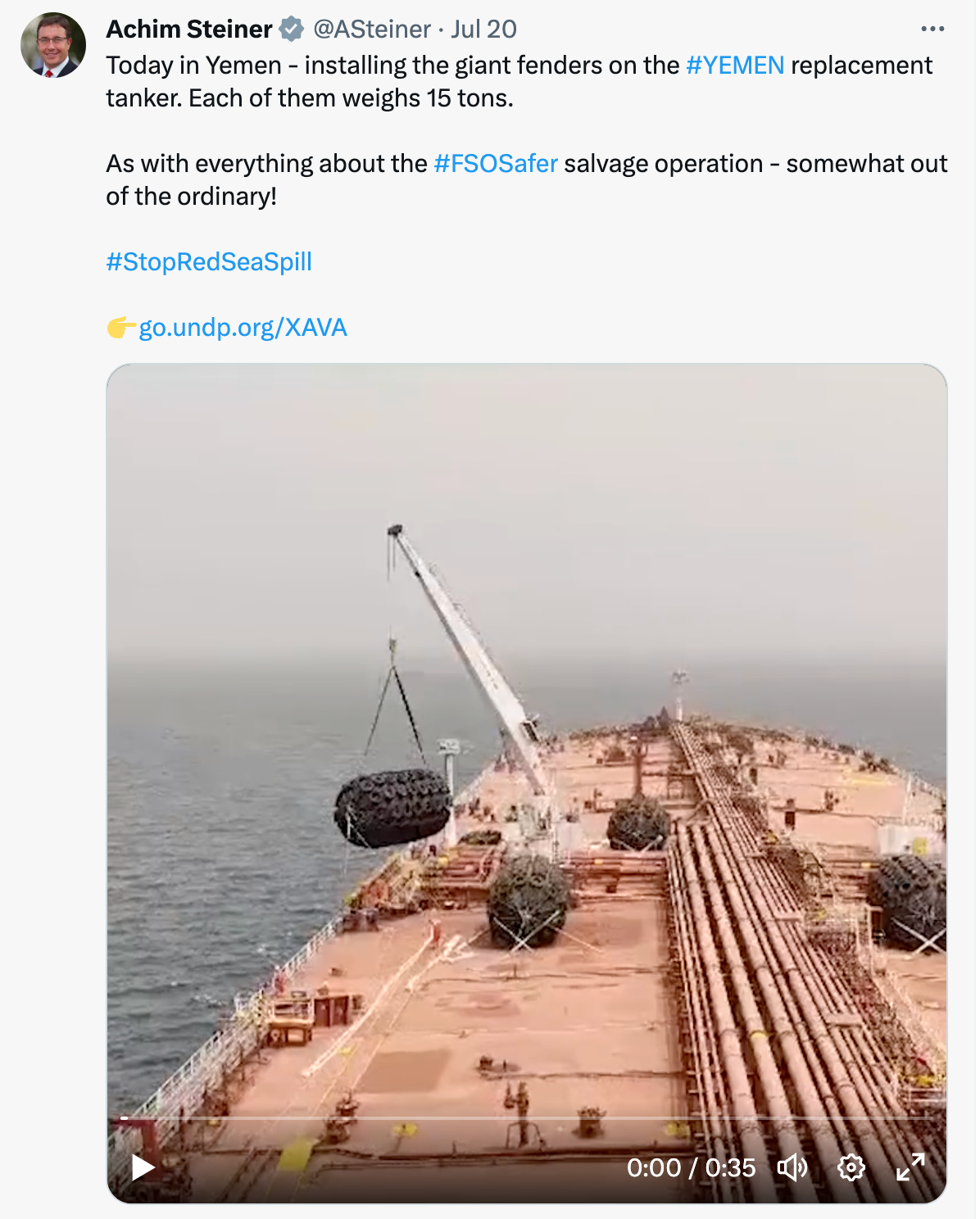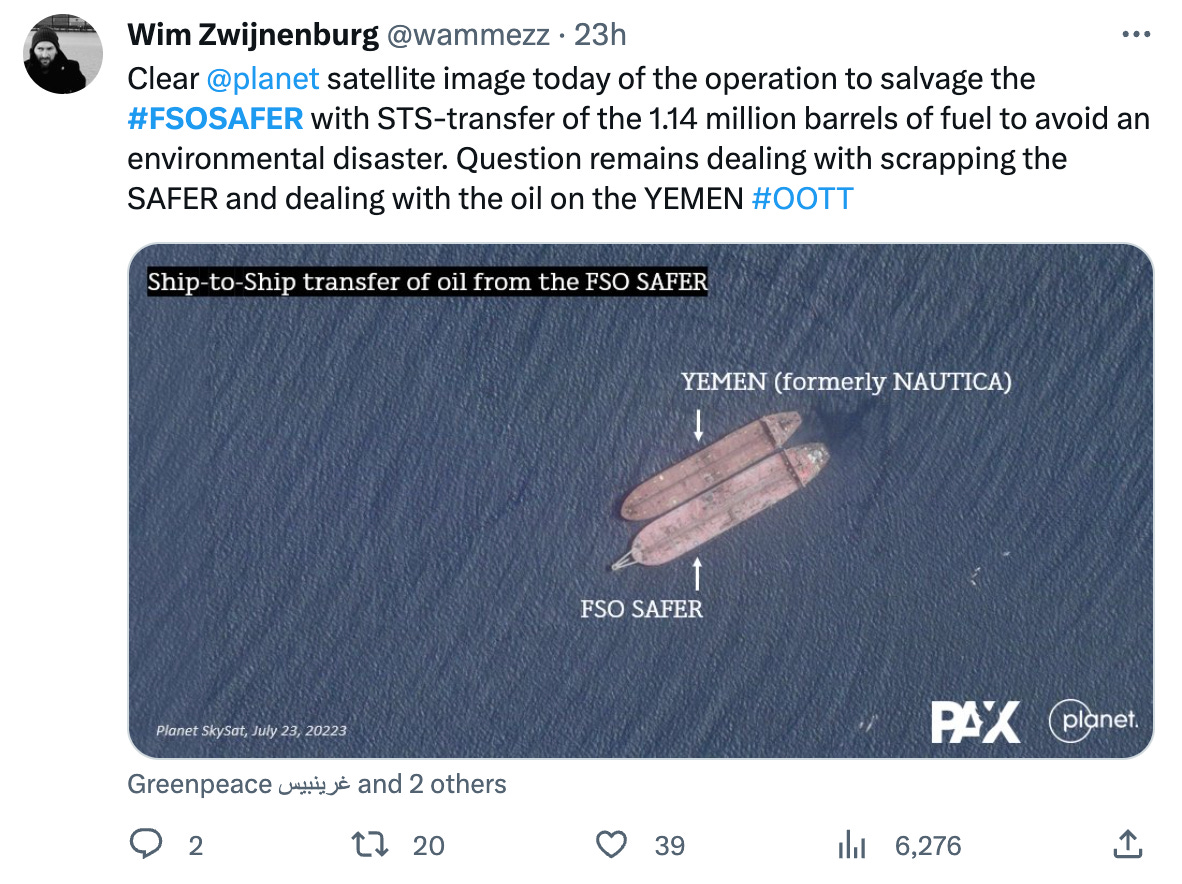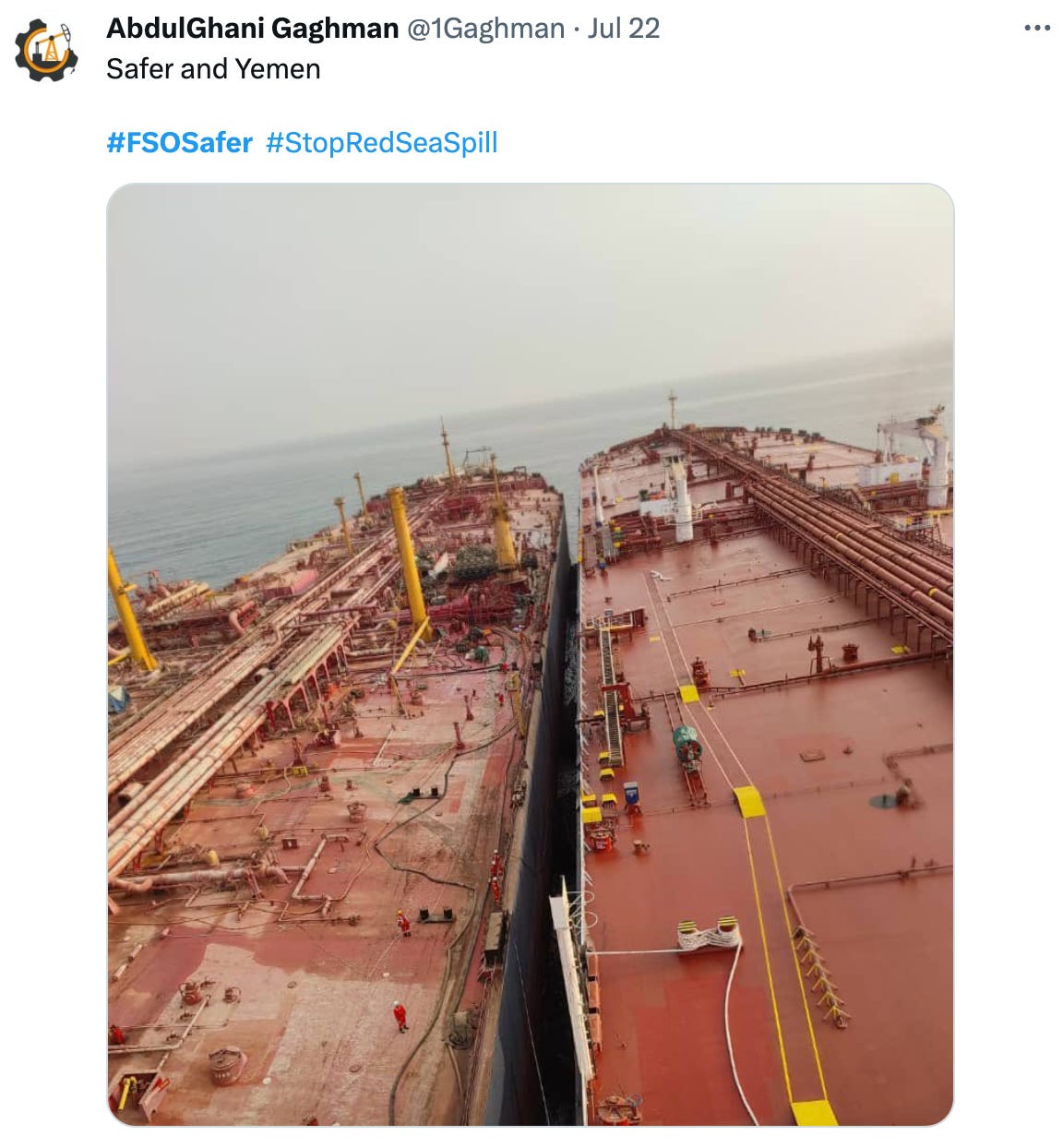FSO Safer: The Ship-To-Ship Transfer can begin
The VLCC Yemen (formerly Nautica) is now alongside the Safer - finally
According to the original timeline released by Boskalis, SMIT Salvage’s parent company, the go-ahead for the Nautica to depart Djibouti on its way to sit aside the FSO Safer was assumed to have been given around 16 June, with the ship-to-ship transfer to commence shortly after and complete around 6 July.
However, it was only four days after that estimated completion date, on 10 July at the monthly UN Security Council Yemen update, that the go ahead had been received - and given just that day by the Houthis who control the area. No public explanation has been given by the UN why the Houthi approval took this long; considering the de facto authorities in the north of the country had agreed to the operational plan, this suggests some political wrangling has been going on behind the scenes - and not for the first time.
Besides a UN update during June about the binding of insurance coverage (12 June), an update from Boskalis that inspections and preparation for the oil transfer were nearly complete (27 June) and an announcement from Oil Spill Response Limited (27 June) that the UNDP had been granted Associate Membership status which included oil spill prevention and response services, official word was agonisingly quiet.
So when the announcement was made by UN Resident Coordinator and Humanitarian Coordinator for Yemen, David Gressly, at the UN meeting that the replacement Nautica would depart Djibouti in a few days, it was greeted with a welcome flurry of activity in the media. Unfortunately, it also contained the familiar news that the remaining required funding was still to be found; this time the UN was still US$25 million short of the budget (including the US$20 million of UN bridge financing which had been advanced and needed to be repaid).
But just over a few days later, confirmation was received that the Nautica had now left Djibouti on 15 July and was on its way to the port of Hodeidah, Yemen.
The Nautica, which had been a stationary dot on various ship-tracking websites since it arrived in Djibouti on 7 May, was now on the move.
It arrived at the port south of the FSO Safer on that Saturday evening. But before the ship-to-ship transfer of oil was to occur between Safer and Nautica, there were a few other steps still to complete.
The most contentious of these is that while ownership of the Nautica is to be handed over to the national oil company SEPOC, which has owned the Safer since 2005 when the Hunt Oil Company were made to leave the scene, this really means that it now belongs to the Sana’a based Houthis where SEPOC is also headquartered.1 And it was this group, who took over the port of Ras Isa in 2015 where the Safer is moored and from which the decline2 in its maintenance can be timed, to whom the replacement vessel was signed over a few days after arrival; it was renamed the Yemen.3
From an operational perspective, to avoid the two large tankers from making contact with each other during the ship-to-ship transfer, large Yokohama pneumatic fenders were installed off the Yemen to create sufficient space between the two vessels.
It was then time for tugboats to power up and get the Yemen and the larger Safer lined up next to each other and ready for the ship-to-ship transfer, as viewable from satellite images and photos.
Once complete setup and preparations have been confirmed, this part of the operation - which is expected to take at least two weeks and is fraught with inherent risk, including from the heat and conditions on a sea littered with mines - will commence. Fortunately, they have the highly professional and experienced SMIT Salvage on the job, and we can all wish them well.
The Aden-based internationally recognised government of Yemen have appointed their own head of SEPOC for what it’s worth.
It should be noted that a skeleton crew, with very little resources, did remain on board and performed miracles to maintain the Safer to enough of a standard that it has not yet blown up or sunk, even though that has always been a significant possibility.
Discussion of this will be left for another time for now; even when the oil is safely moved to the replacement VLCC Yemen, this story is unfortunately far from over.



